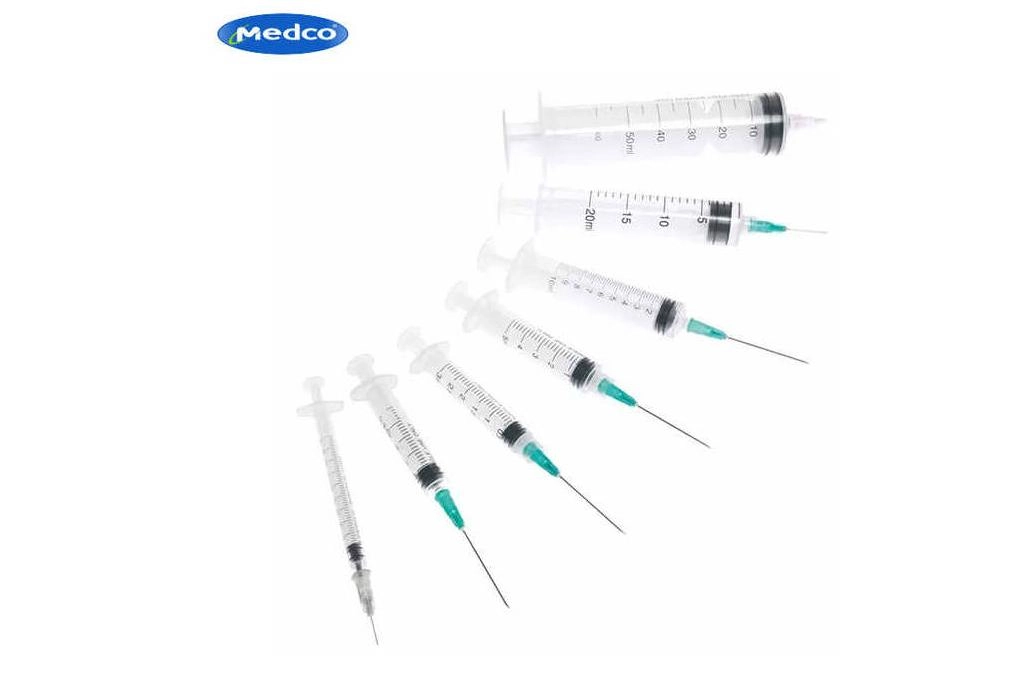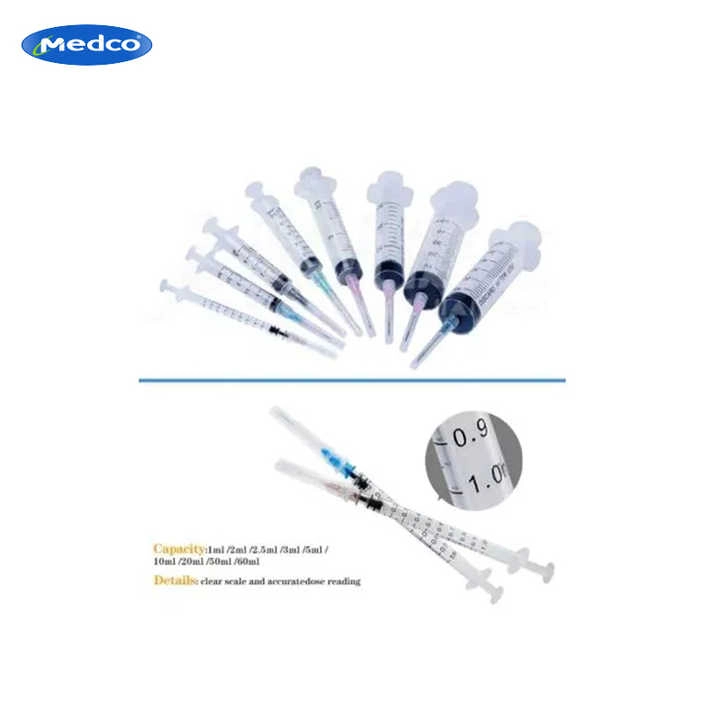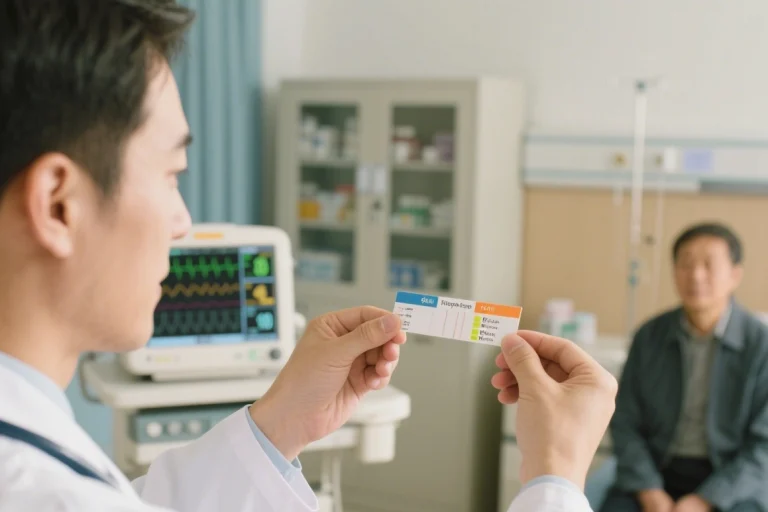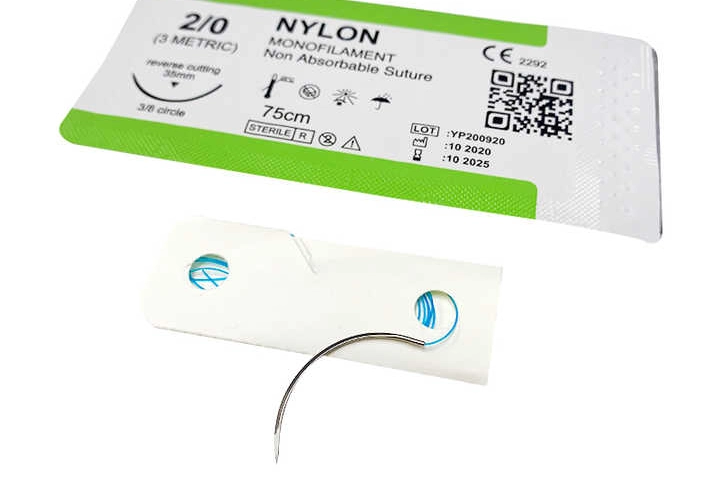
Types of Syringes by Tip Configuration
Luer Lock Syringes
Luer lock syringes come with a threaded tip. It grabs the needle tight. No chance of it slipping off mid-use. This keeps things safe and spot-on. You’ll see these a lot in hospitals, especially for IV drips or specific meds. The lock makes them super reliable. That’s why nurses and doctors love them.
Slip Tip Syringes
Slip tip syringes have a smooth, pointy end. The needle slides on and off like a breeze. They don’t lock like luer locks do. But their no-fuss design is perfect for simpler jobs. Think drawing up fluids or giving meds that don’t need much force. They’re quick and easy for less tricky tasks.
Catheter Tip Syringes
Catheter tip syringes sport a long, slightly narrowed tip. It’s built to slide right into catheters or tubes. These are your go-to for stuff like flushing out tubes or feeding patients through tubing. The tip’s shape fits special equipment just right. It makes moving fluids in or out a smooth process.
Eccentric Tip Syringes
Eccentric tip syringes have a nozzle that’s off to one side. This lets the syringe stay flat against the skin during a shot. It cuts down on awkward angles. Plus, it’s easier to hit veins or other spots, especially for shallow jabs. These are awesome for precise work with less tissue damage.
Classification Based on Syringe Design
Disposable vs. Reusable Syringes
Syringes split into two big groups: disposable and reusable.
Disposable Syringes: Use them once, then toss them. They’re sterile out of the package, so no worries about spreading germs. Hospitals and clinics grab these for their ease and safety.
Reusable Syringes: These are made tough, from stuff like stainless steel or glass. Clean them well, and they’re good to go again. They’re kinder to the planet but need serious scrubbing to stay germ-free.
Manual vs. Automatic Syringes
Syringes also differ by how they’re used: manual or automatic.
Manual Syringes: You work these by hand. You decide how fast the meds or fluids flow. They’re super versatile, popping up in all sorts of medical tasks.
Automatic Syringes: These have a system that pushes the fluid for you. They keep doses steady and save you effort. They’re a big help in vet work or big vaccination drives where speed and accuracy are key.
Every syringe type has its own job in healthcare. From everyday shots to fancy procedures, they’ve got you covered. Knowing what each does helps medical folks pick the best one. It keeps patients safe and treatments on point.
Specialized Types of Syringes for Specific Uses
Insulin Syringes for Diabetes Management
Insulin syringes are made for folks handling diabetes. They’re small, with super thin needles to make shots less ouchy. They’re marked in units to nail the exact insulin dose. Getting this right is huge. It affects blood sugar and health big time. These often team up with gadgets like digital glucose testers. Those help keep tabs on sugar levels.
Tub shift Syringes for Skin Testing
Tuberculin syringes are mostly for TB tests. They check for tuberculosis infections. They’ve got a skinny barrel, holding up to 1 milliliter. That’s perfect for tiny, precise doses. The fine needle keeps skin shots comfy. They’re also handy for vaccines or other meds needing small amounts.
Prefilled Syringes for Emergency Medication
Prefilled syringes come ready with meds inside. They’re a lifesaver in emergencies. No need to fill them up, so there’s less chance of mess-ups or germs. You’ll find them in situations like allergic reactions or heart scares, where every second counts. They make things safer and faster in high-stress moments.
Oral Syringes for Pediatric and Veterinary Use
Oral syringes don’t have needles. They’re for giving liquid meds by mouth. They’re big in kid care, helping get the right dose to little ones who can’t swallow pills. Vets use them too, to safely dose animals. The design stops any choking or injury risks.
Medco’s Range of High-Quality Syringes

Different Types for Your Usage
Medco is a pro at supplying medical gear. We have got a huge lineup of top-quality syringes for all kinds of medical needs. Whether it’s insulin syringes for diabetes or catheter tip ones for special tasks, Medco’s got reliable tools. Our stuff meets tough CE and ISO standards. With 18 years in the game, we are trusted all over the world.
Syringes with National Safety Standards
Medco products stick to national safety rules. We are built for safe use in medicine. Think locked-in needles on luer lock syringes or clear, spot-on markings on insulin ones. Medco tests everything hard to make sure it’s solid before it hits the market.
Medco’s all about new ideas and keeping customers happy. That’s why we lead in medical devices for excellent service. Our syringes handle tons of medical jobs while keeping patients safe and treatments effective.
Choosing the Right Syringe for the Job
How to Choose Syringe?
Picking the right syringe is a big deal in healthcare. Each one’s got its own vibe. Using the wrong one can mess up treatment or make patients uncomfy. Take luer lock syringes—they’re great for high-pressure shots. Their threaded tip locks the needle down tight. No leaks or slip-ups. Slip tip syringes? They’re better for quick, simple stuff. They’re easy to pop on and off when you don’t need a super secure fit.
Specialized Area for the Syringe
For special jobs, choosing wisely is even more crucial. Catheter tip syringes are a must for tube-related work. Their long tip slides into tubing perfectly. A regular syringe just won’t cut it. Eccentric tip syringes are champs for delicate shots. Their off-center nozzle makes hitting veins easy and keeps tissue damage low.
Diabetes care needs insulin syringes, no question. Their tiny needles and unit markings make dosing exact. A tuberculin syringe might look close, but it’s not built for insulin. That could lead to mistakes. In emergencies, prefilled syringes are clutch. They’re loaded with the right drug dose, so you skip the guesswork and act fast.
Oral syringes are key for kids or pets. No needle means no danger for oral dosing. A standard syringe with a needle would be risky. Vets also lean on automatic syringes for big animal groups. They pump out steady doses quick. Manual ones are great but can slow you down in a rush.
Medical folks need to know these differences inside out. Training helps them choose smart. Companies like Medco back this up with clear info on their syringes. They include guides on how to use them right. This makes sure doctors, nurses, and vets grab the perfect tool every time. It’s all about keeping patients safe and treatments solid.
FAQ
Q: What are insulin syringes, and why are they special?
A: Insulin syringes are small with super thin needles to make shots less painful for people with diabetes. They’re marked in units to measure insulin exactly. Precision is key since insulin doses affect blood sugar directly.
Q: When are tuberculin syringes used?
A: Tuberculin syringes are mostly for TB skin tests to check for tuberculosis. They hold up to 1 milliliter and have fine needles for comfy, precise injections. They’re also used for small-dose vaccines or meds.




